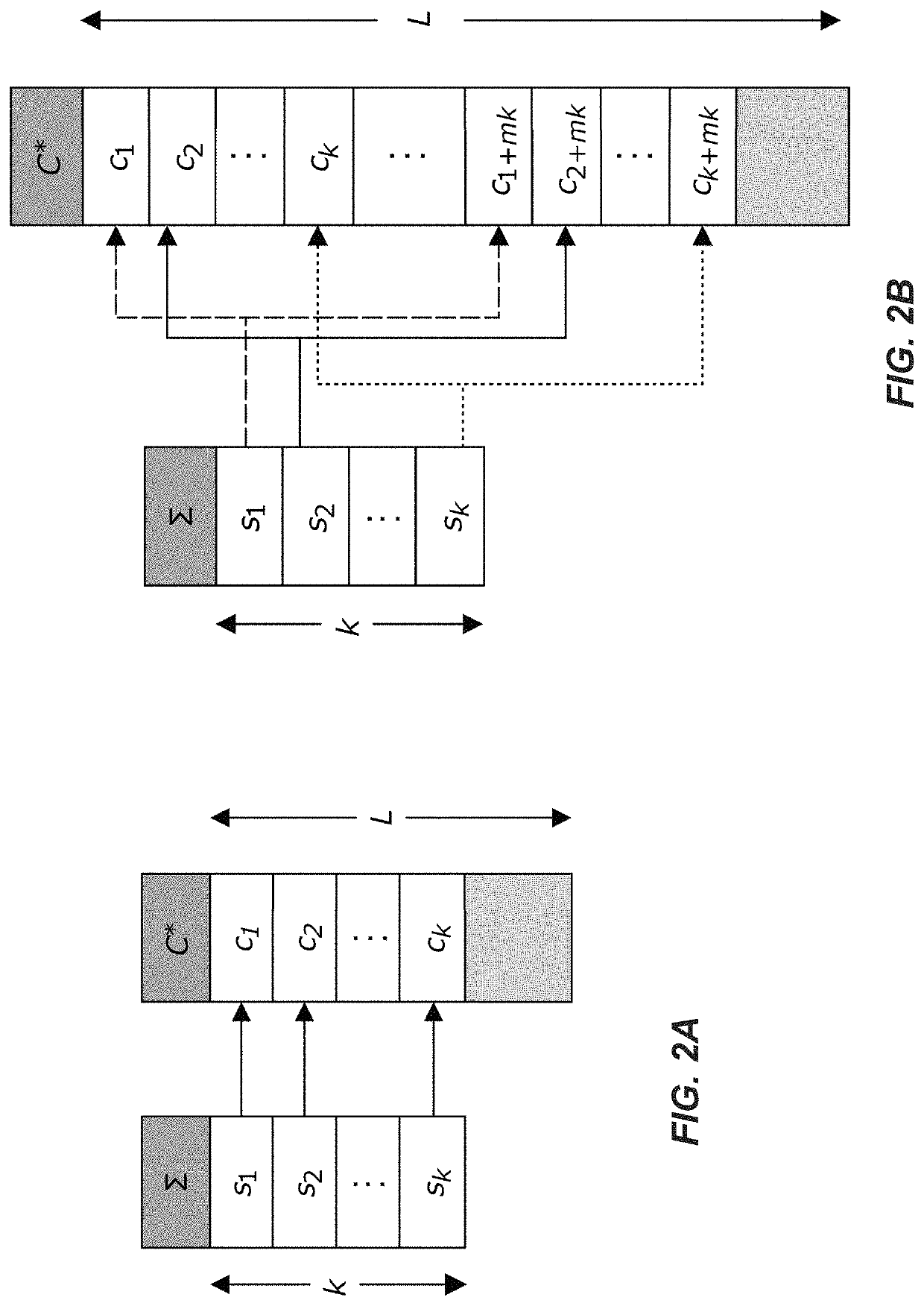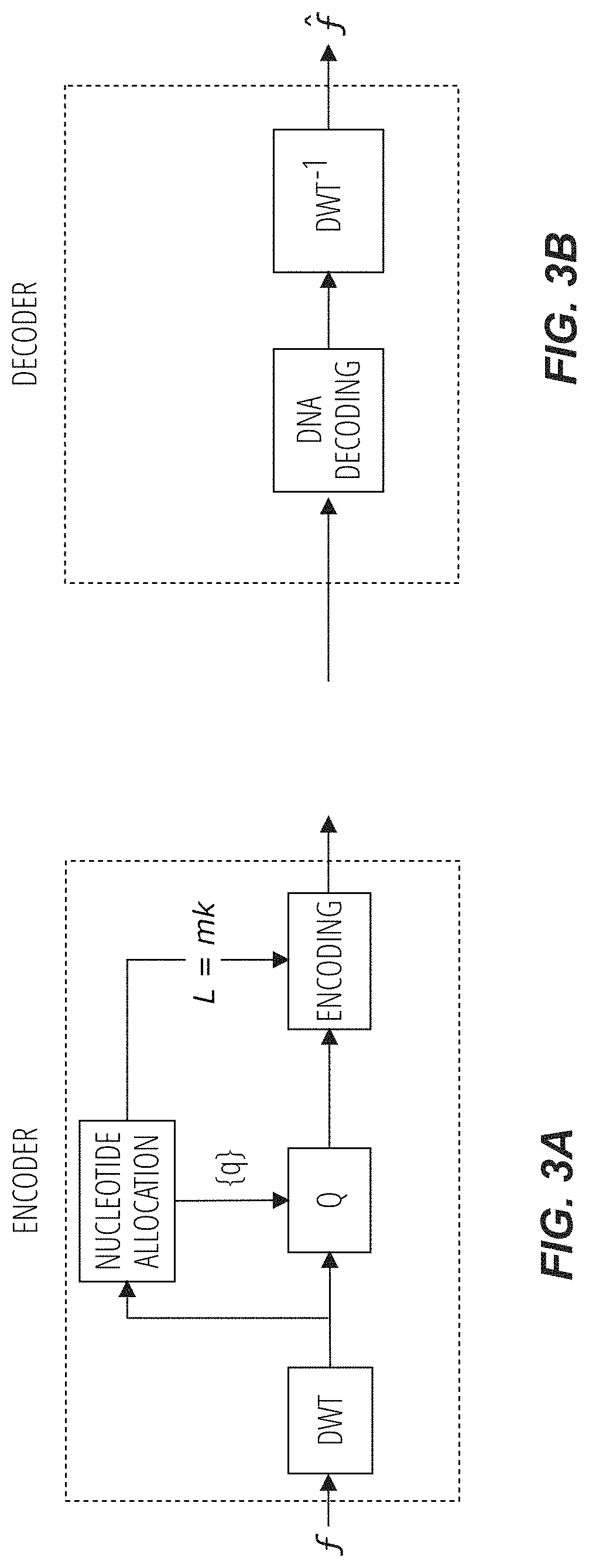Methods for storing digital data as, and for transforming digital data into, synthetic DNA
a digital data and synthetic dna technology, applied in the field of encoding data, can solve problems such as continuing to present challenges
- Summary
- Abstract
- Description
- Claims
- Application Information
AI Technical Summary
Benefits of technology
Problems solved by technology
Method used
Image
Examples
Embodiment Construction
[0010]Disclosed are methods for synthesizing DNA to encode digital data therein. Also disclosed are methods for encoding data into synthesized DNA. The methods use a specific alphabet of nucleotides and implement, in at least some embodiments, a replication according to which one symbol in the data to be encoded corresponds to a plurality of codewords in a nucleotide alphabet. By embodiments of the disclosure, the methods efficiently produce a quaternary sequence that is robust to sequencing noise and respects the restrictions that accompany the creation of synthetic DNA. The methods enable encoding specific for the storage of digital data into DNA. Moreover, the methods enable encoding of a large amount of digital data-whether binary or non-binary-into a very stable medium, synthetic DNA.
[0011]For example, the methods may be used to encode so-called “cold data,” such as old digital photographs, into synthetic DNA as a storage media, stable for a long and indefinite period of time. ...
PUM
 Login to View More
Login to View More Abstract
Description
Claims
Application Information
 Login to View More
Login to View More - R&D
- Intellectual Property
- Life Sciences
- Materials
- Tech Scout
- Unparalleled Data Quality
- Higher Quality Content
- 60% Fewer Hallucinations
Browse by: Latest US Patents, China's latest patents, Technical Efficacy Thesaurus, Application Domain, Technology Topic, Popular Technical Reports.
© 2025 PatSnap. All rights reserved.Legal|Privacy policy|Modern Slavery Act Transparency Statement|Sitemap|About US| Contact US: help@patsnap.com



